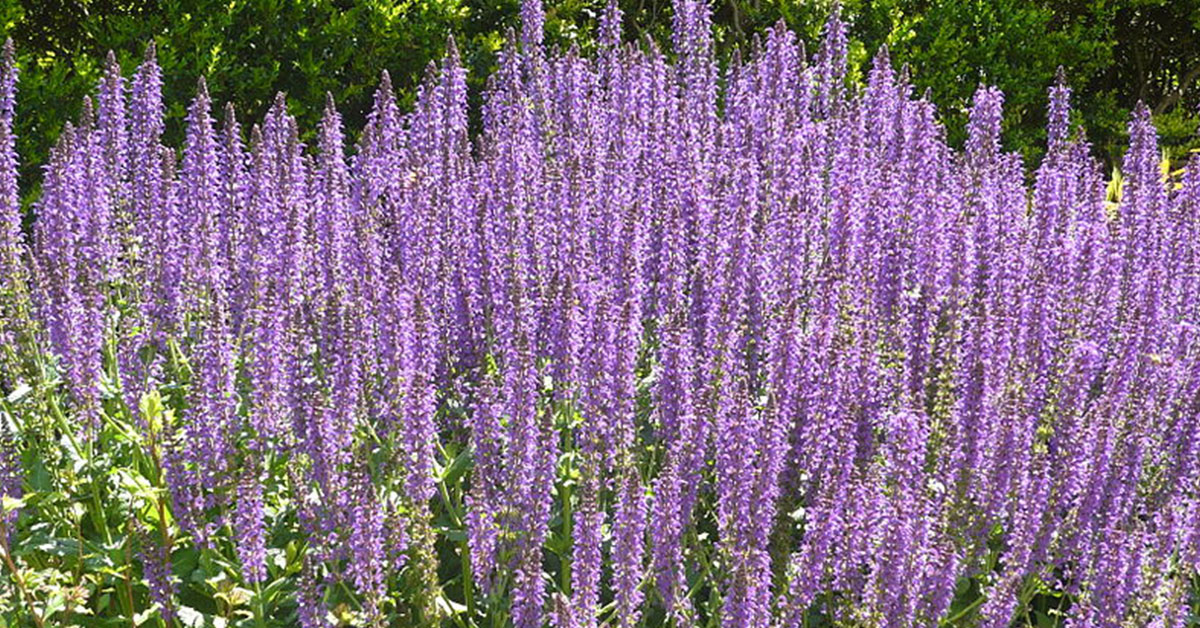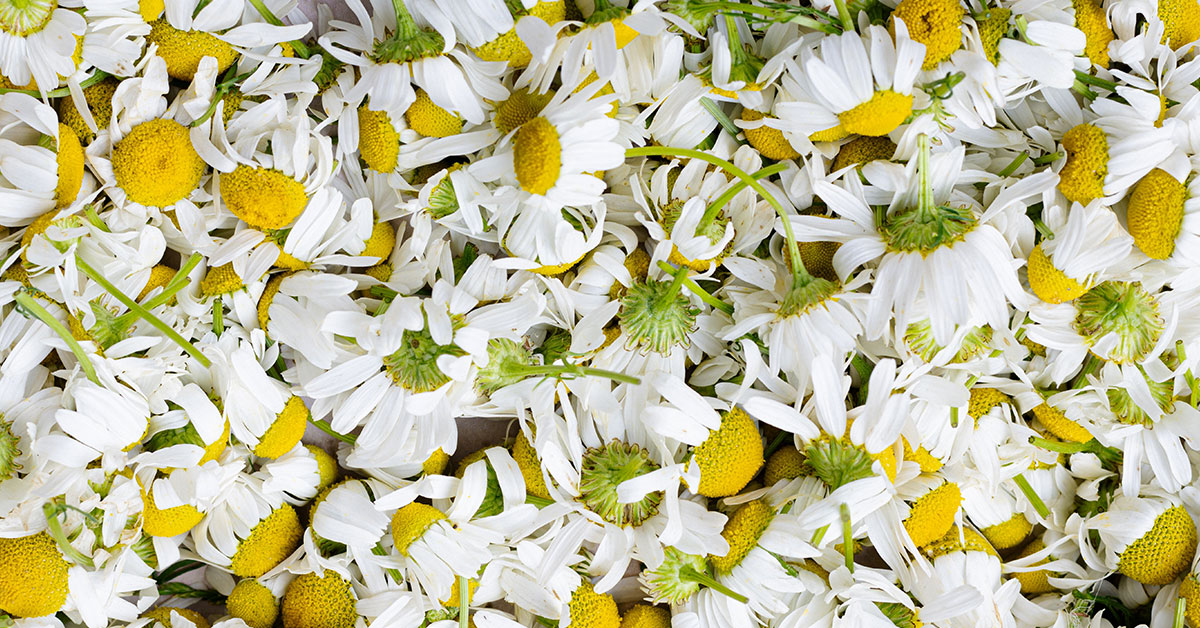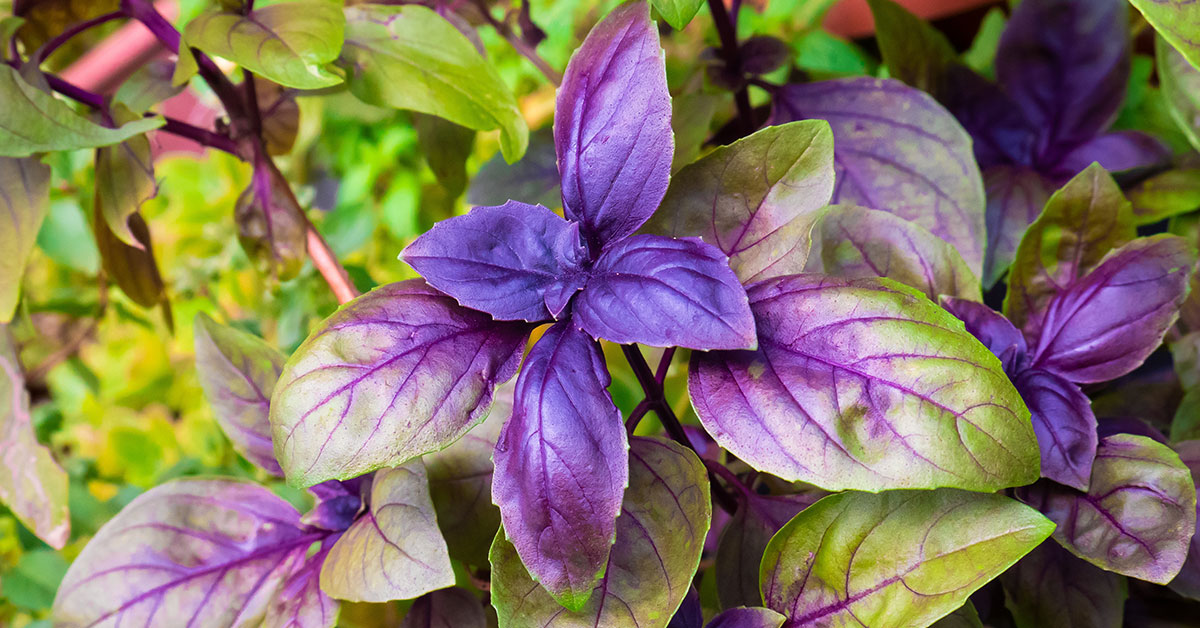The blossoms of May Night Salvia are recognized for their vibrant color. They are also prized for attracting a variety of colorful fauna to the area. May Night Salvia is only one of many plants in the fascinating genus that has something unique to offer growers with a wide range of preferences. In 1997, it was named Perennial Plant of the Year.
Although ‘May Night’ Salvia is a member of the mint family, the foliage lacks a characteristic mint scent. Instead, some growers describe the leaves’ odor as pleasant, although this is a matter of personal preference. Flowers give a beautiful touch to spring bouquets, but don’t use leafy stems unless you like the smell.
Growing May Night Salvia
The fast-growing plants of May Night Salvia are herbaceous perennials. They are medium-sized mint plants that should be planted in late spring or early summer. In the early summer border, these Perennial Sages are indispensable for their abundant display of spiky blossoms. This variety has medium-sized blooms that are deep indigo violet-blue in color. To encourage recurrent blossoming, remove fading blossoms. Cutting is a breeze. Once established, drought-tolerant. Heat and humidity are also tolerated. After flowering, the leaves can be cut back aggressively to revitalize them.
Here are some brief facts about the popular aesthetic plant:
- Latin name: Salvia sylvestris
- Other names: May night wood sage, woodland sage, meadow sage
- Native to: Europe, Asia
- Invasiveness: No
- Tenderness: Herbaceous perennial
- Sun: Full sun
- Water: Low-Water
- Soil: Well-draining, Sandy or Clay
- Hardiness zone: Zones 4 through 8
- When to plant: Early spring or fall
- Spacing: 1 to 3 ft.
- Plant height: 1.5-2 ft.
- Bloom period: Late spring and reblooms in summer
- Time to maturity:
- Container friendly: Yes
- Fertilizer: Not required
- Toxicity: Non-toxic
- Deer resistant: Yes
- Pest resistant: Yes
May Night Salvia are beautiful purple-blue perennials that may thrive in a variety of conditions. They require little maintenance, provide interest throughout the year, and are pest and disease-free. The plants bloom in the second half of May, which gives them their evocative name. This long-blooming perennial plant has little blooms on spikes and grows to be 18 to 24 inches tall and wide. The lance-shaped leaves contribute to the plant’s vitality.
Water
Even though they are drought-tolerant perennials when established, young plants require a modest quantity of water. It flowers more profusely when watered on a regular basis. During the winter, he dislikes being in a moist location.
Sunlight
May Night Salvia blooms should be grown in full light; a south-facing position is ideal for this plant. They prefer full sun or strong dappled shade, while lesser light might cause the stems to become lanky and floppy. When growing ‘May Night’ Salvia in areas with excessive heat and humidity, flopping stems might be an issue.
Soil
To be a thriving plant, May Night Salvia requires well-draining soil. To assist the soil drain properly, you may have to add sand. May Night Salvia generally tolerates hard clay soil but may fall victim to root rot if the soil is damp in winter.
Fertilizing
May Night Salvia does not need much fertilizer and are a wonderful low-maintenance plant to have in your yard. It is preferable to feed them once the flowering season is finished if you’re going to feed them.
Invasiveness
May Night Salvia is not invasive. Salvias, on the whole, do not have a bad name for being invasive. Particular species, on the other hand, might be a concern in certain areas.
This is the one you should be aware of – The Mediterranean sage, Salvia aethiopis, has been shown to be invasive in regions of Arizona, Colorado, California, Idaho, Oregon, Nevada, and Washington.
Growing May Night Salvia In Containers
Salvia can be cultivated as a potted plant or from seed planted early indoors and transferred outside after frost. May Night Salvia grows nicely in pots, however, to help prevent drought, sprinkle a gravel/mulch combination into the soil. If you reside outside their hardiness zones and have May Night Salvia in pots, bring them indoors for the winter months.
Care & Tips
May Night Salvia bushes can provide you with flowers all summer long if you remove the spent blossoms. Long-blooming perennials are a delight to grow for gardeners who value bloom sequence. May Night Salvia may be clipped by hand or using clean garden shears. It can also be cut with a string trimmer.
Common Problems
Scale insects and whitefly have been known to attack May Night Salvia. If either of these insect pests bothers your plants, spray them with neem oil, a popular product for organic pest control.
After repeated harsh freezes in colder zones, ‘May Night’ Salvia will fade back to the ground. Plant tops should be mulched in the colder regions. In the spring, keep an eye out for fresh growth.
Propagating May Night Salvia
Stem-cuttings of May Night Salvia can be cultivated in water, soil, or wet compost. To do so, cut 2- to 8-inch cuts with a clean, sharp gardening shear. Place the stem in clean, wet soil or clean water. When the roots are 3/4 inch long, it is time to replant.
Wildlife Attracted By May Night Salvia
May Night Salvia is a butterfly-friendly plant and is known for attracting Monarch butterflies. The popular perennial will also attract honey bees, hummingbirds, and bumblebees to your yard. They do not attract rabbits, deer, or other animals, thankfully, because their powerful odor repels them.
The History Of May Night Salvia
May Night Salvia is one of the first Salvias to bloom, although it blooms all summer and into fall. Not a native of the Midwest in the United States. Originating in the horticultural industry. In 1956, German horticulture Karl Foerster invented ‘May Night’ as ‘Mainight.’
Uses For May Night Salvia
The flowers of May Night Salvia find use in cut flower arrangements, while the dried leaves are excellent ingredients for potpourri. Some people use the young, sensitive leaves in salads or as a spice in cooked meals (but they aren’t for everyone). But, most crucially, May Night Salvia’s lengthy flowering time makes it a workhorse in the perennial garden. This characteristic, together with the vibrant color of the blossoms, is the primary reason for cultivating this perennial.
Salvia is a flower that represents longevity, knowledge, esteem, and excellent health. The plant’s name, ‘May Night,’ relates to the rich purple color of the blossom, which resembles a spring night sky. The blooms bloom in the late spring and early summer. They are a great match for peony flowers and roses, which bloom around the same time. Planting May Night Salvia next to silver-leaved plants like lamb’s ears or Artemisia looks lovely.













